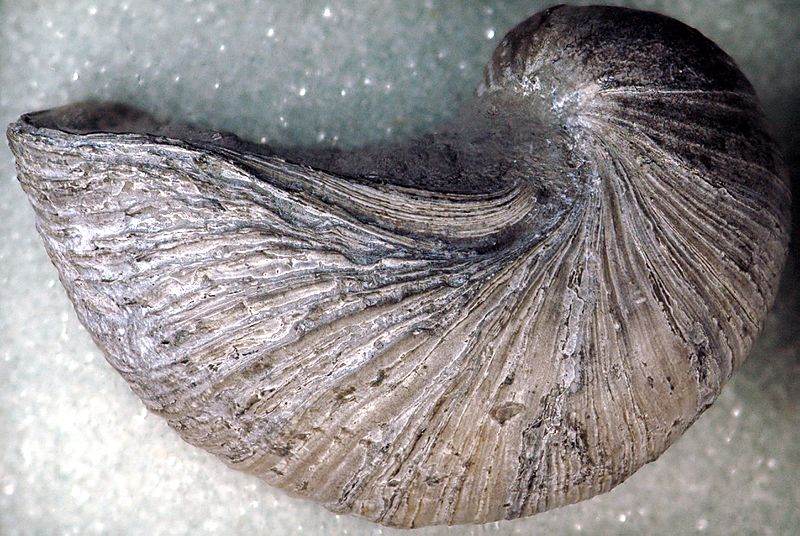Archivo: Gryphaea arcuata fossil oyster (Blue Lias, Lower Jurassic; coastal cliffs near Lyme Regis, far-western Dorset County, southwestern England) 1 (15206675956)

Descripción: Gryphaea arcuata fossil oyster from the Jurassic of England (6.4 cm across at its widest) - anterior view of left valve. This view closely approximates the oyster's original living position. Most of the shell seen here was submerged beneath the mud, and the sediment-water interface was probably a little below the lip seen in the upper central and left portions of the photo. Some fossil oysters attained rather strange-looking shells when compared to modern forms. A famous example is the “devil's toenail”, a Mesozoic-aged fossil oyster called Gryphaea arcuata (Animalia, Mollusca, Bivalvia, Pteriomorphia, Pterioida, Ostreina, Ostreoidea, Gryphaeidae), first named by Jean-Baptiste Lamarck in 1801. Most modern & fossil clams have asymmetrical but equal-sized shells that are mirror images of each other. Oyster shells depart radically from this general rule. The Gryphaea oysters evolved a greatly enlarged, very thick, coiled, highly convex left valve & a greatly reduced, relatively thin, concave right valve. The thickness of the left shell functioned to protect the oyster from predators such as decapods (crabs) and boring gastropods (snails). The overall shape of the gryphaeid oyster shell was a consequence of its living on soft, fine-grained substrates. All oysters are filter feeders, and practically all are hard substrate encrusters at some point in their ontogeny. The highly coiled Gryphaea oysters are free-living forms as large adults. Their shell shape appears to be the result of repeated downward toppling into the mud along the ventral margin of the left valve by the weight of the shell. Stratigraphy: Blue Lias, lower Lower Jurassic. Locality: coastal cliffs in the vicinity of Lyme Regis, far-western Dorset County, southwestern England. Much info. from: Stenzel (1971) - Oysters. Treatise on Invertebrate Paleontology, Part N, Mollusca 6, Bivalvia, Volume 3.
Título: Gryphaea arcuata fossil oyster (Blue Lias, Lower Jurassic; coastal cliffs near Lyme Regis, far-western Dorset County, southwestern England) 1 (15206675956)
Créditos: Gryphaea arcuata fossil oyster (Blue Lias, Lower Jurassic; coastal cliffs near Lyme Regis, far-western Dorset County, southwestern England) 1
Autor(a): James St. John
Términos de Uso: Creative Commons Attribution 2.0
Licencia: CC BY 2.0
Enlace de Licencia: https://creativecommons.org/licenses/by/2.0
¿Se exige la atribución?: Sí
Usos del archivo
La siguiente página enlaza a este archivo:

